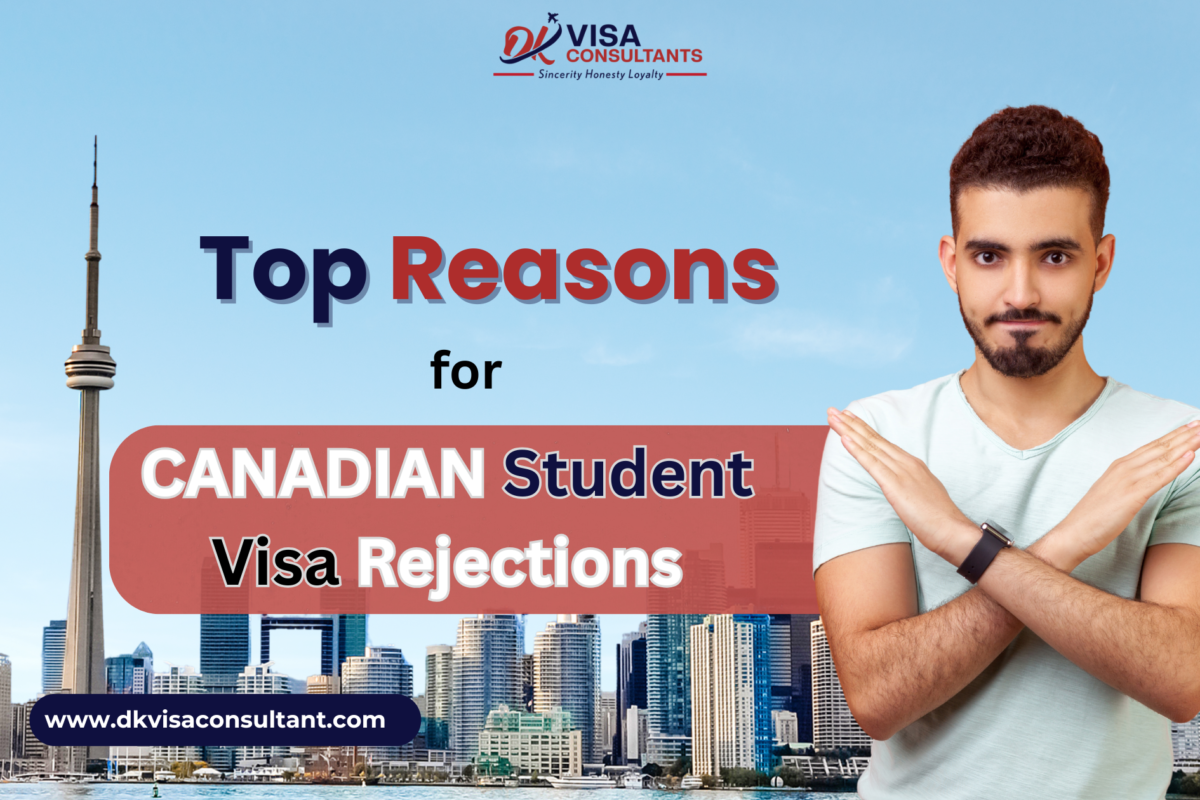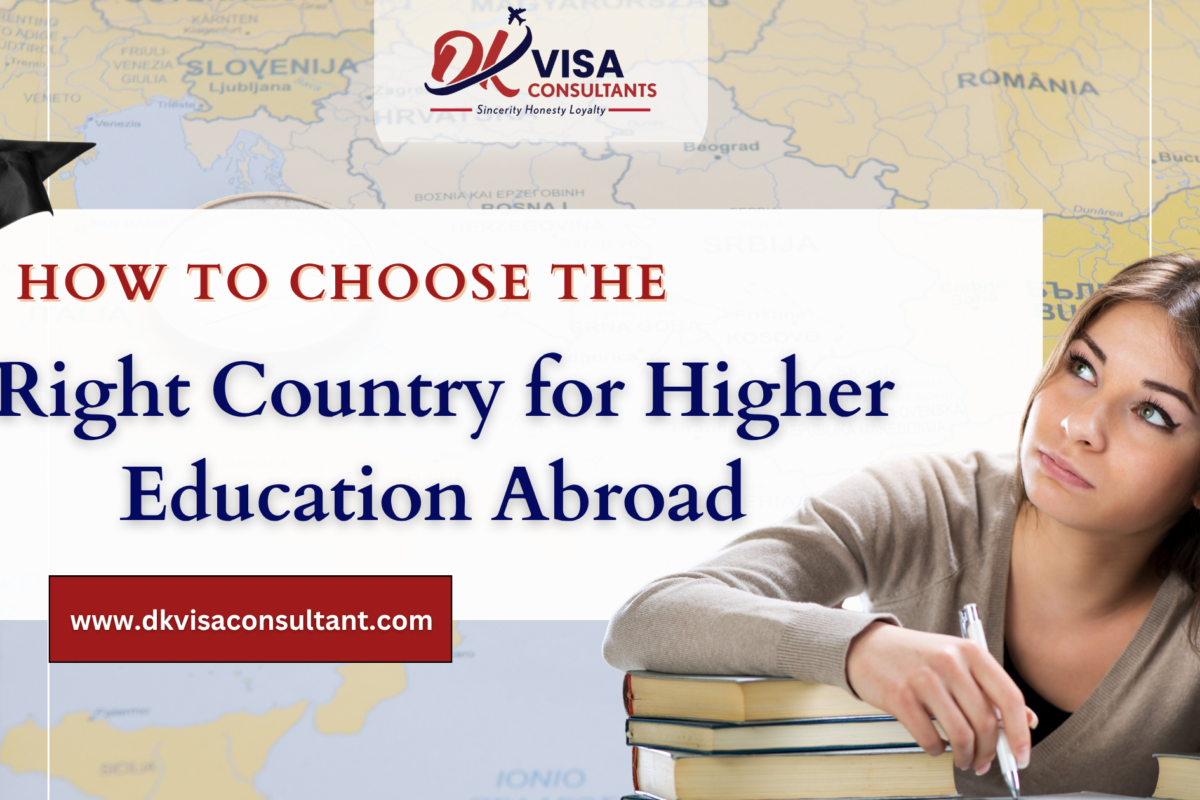The decision to pursue a master’s degree abroad marks a turning point in many academic and professional journeys. However, with dozens of countries offering attractive programs, the challenge often lies in identifying which destination delivers the right balance of visa accessibility, study cost, and return on investment (ROI). The title How to Choose a Country for Masters Abroad reflects a growing interest among Indian students seeking quality education, strong career prospects, and financial feasibility.
Selecting the right country is no longer only about academic reputation — it’s about aligning opportunities with long-term goals. Factors such as post-study work rights, tuition fees, scholarship options, job markets, and immigration pathways now play an equally crucial role.
This blog explores how to evaluate these aspects effectively and compares the top global study destinations to help make an informed decision.
Understanding What Matters Most in Choosing a Destination
Before comparing specific countries, it’s essential to identify the core parameters that influence the decision-making process. These typically include:
- Visa Flexibility: Ease of obtaining a student visa and the ability to transition to a work or permanent residency visa after graduation.
- Tuition Fees and Living Costs: The overall financial requirement, including accommodation, food, and travel expenses.
- Quality of Education: University rankings, faculty expertise, and international accreditation.
- Post-Study Work Rights: Duration and type of work opportunities available after completing the program.
- Return on Investment (ROI): Career outcomes, salary prospects, and the likelihood of recouping study costs through employment.
Evaluating each country against these factors helps students identify destinations that best match their financial situation and professional aspirations.
Suggested Reading: Budget friendly Countries to Study Abroad
Visa Regulations and Post-Study Work Options
Visa approval rates and post-study work rights play a decisive role when choosing where to study. Countries offering smoother visa processes and longer work permits are often preferred by international students.
- Canada: Offers a straightforward study visa process with the SDS (Student Direct Stream) for Indian students. Graduates can obtain a Post-Graduation Work Permit (PGWP) for up to 3 years, depending on program duration.
- Australia: Provides a Temporary Graduate Visa (subclass 485) allowing students to stay for 2–4 years post-graduation.
- United Kingdom: Grants a Graduate Route Visa enabling international students to remain for 2 years after completing their master’s.
- Germany: Allows an 18-month post-study work visa to find employment related to the degree.
- New Zealand: Offers a 1–3-year post-study work visa depending on the qualification level and region.
Countries like Canada and Australia are particularly popular because their study visas often serve as a stepping stone to permanent residency, providing both academic and migration benefits.
Cost of Education and Living Expenses
Affordability is often the top consideration. The cost of studying abroad includes tuition fees and living expenses such as housing, transportation, food, and insurance. Below is a broad comparison of popular destinations:
| Country | Average Tuition Fees (per year) | Living Costs (per year) | Remarks |
|---|---|---|---|
| Germany | €0–€5,000 | €9,000–€12,000 | Public universities often have no tuition fees |
| France | €2,800–€4,000 | €10,000–€12,000 | Affordable public education + scholarships |
| Canada | CAD 20,000–CAD 35,000 | CAD 15,000–CAD 20,000 | Work while studying permitted |
| Australia | AUD 30,000–AUD 45,000 | AUD 20,000–AUD 25,000 | High living cost but strong ROI |
| UK | £20,000–£35,000 | £12,000–£18,000 | Shorter program duration (1 year) reduces total cost |
| New Zealand | NZ$25,000–NZ$35,000 | NZ$15,000–NZ$20,000 | Balanced affordability |
| Italy | €1,500–€3,000 | €8,000–€10,000 | Budget-friendly and high-quality |
| Poland | €2,000–€5,000 | €7,000–€9,000 | Emerging affordable European hub |
While Germany and Italy offer the lowest tuition fees, countries like the UK provide shorter program durations (often one year), effectively balancing the overall expenditure.
Scholarships, assistantships, and part-time jobs can further reduce financial pressure, making a significant difference to the ROI.
Evaluating Return on Investment (ROI)
The ROI of studying abroad depends on post-graduation employability and earning potential. The goal is to ensure that the degree generates long-term value through career growth and income.
- Canada: Strong job market with starting salaries for master’s graduates averaging CAD 60,000–75,000 annually. High immigration acceptance boosts ROI.
- Australia: Graduate salaries range between AUD 65,000–80,000. The booming tech, healthcare, and business sectors provide long-term job security.
- UK: Average graduate salary is £35,000–£45,000, with global recognition of British degrees adding long-term career advantage.
- Germany: Known for its thriving engineering and manufacturing industries, offering starting salaries of €45,000–€55,000.
- New Zealand: Average salary of NZ$60,000–$70,000 for master’s graduates, with ample scope for permanent residency.
ROI is also influenced by the potential to gain work experience through internships, research roles, or graduate programs while studying.
Quality of Education and Global Recognition
A country’s academic reputation significantly impacts employability.
- United Kingdom: Houses globally ranked institutions like Oxford, Cambridge, and Imperial College London, offering research-driven programs and global alumni networks.
- Canada: Canadian universities like Toronto, McGill, and UBC maintain consistent international rankings with a focus on applied learning.
- Germany: Renowned for technical and engineering excellence, especially through universities like TU Munich and RWTH Aachen.
- Australia: Known for practical and innovation-led programs with institutions like the University of Melbourne and ANU.
- France: Offers top programs in business, arts, and fashion through elite schools like HEC Paris and ESSEC.
Countries with strong links between education and industry tend to provide better employability outcomes and ROI, as graduates can transition seamlessly into the workforce.
Work Opportunities and Long-Term Migration Pathways
Work rights during and after study greatly influence destination selection.
- Canada and Australia offer clear pathways to permanent residency through point-based immigration systems. Students gain valuable work experience post-graduation, which supports PR eligibility.
- Germany and France encourage international graduates to stay and contribute to their economies, especially in high-demand sectors like engineering and IT.
- UK has recently reintroduced favourable post-study work rights, strengthening its appeal among Indian students.
- New Zealand offers post-study work permits with flexible conditions, especially for programs aligned with local skill shortages.
Countries that combine post-study work opportunities with immigration benefits often yield stronger long-term ROI for students
Balancing Cost with Career Outcomes
When comparing destinations, it’s important to view cost and ROI together rather than in isolation. For instance:
- Germany offers free education, but German language proficiency can be crucial for employability.
- UK programs are expensive but shorter, often allowing quicker career entry and earnings recovery.
- Canada provides moderate cost and high ROI, especially with clear PR pathways.
- Australia balances high living expenses with strong post-study work and PR prospects.
- Italy and Poland are cost-efficient but may offer limited post-study work opportunities compared to top English-speaking countries.
The ideal destination depends on aligning financial capability, language comfort, and long-term migration goals.
How DK Visa Consultant Simplifies the Process
Choosing a country for a master’s degree abroad involves numerous steps — evaluating universities, calculating budgets, preparing documents, and understanding visa regulations. DK Visa Consultant assists throughout this journey by providing:
- Personalised Country & University Selection based on career goals, budget, and ROI analysis.
- Expert Visa Guidance for study, dependent, or post-study work applications.
- Scholarship & Financial Aid Assistance to reduce educational expenses.
- Pre-Departure & Post-Arrival Support including accommodation and transition assistance.
By combining expertise with transparency, DK Visa Consultant ensures a seamless transition from planning to successful enrolment
Conclusion
Selecting the right destination for a master’s degree abroad is a strategic decision that blends academic ambition with financial planning. Understanding visa regulations, tuition costs, post-study work rights, and ROI helps identify the most rewarding options. Countries such as Canada, Germany, Australia, and the UK consistently offer a balance of quality education, work opportunities, and long-term migration potential. With the right guidance and preparation, pursuing a master’s abroad can open doors to global careers and personal growth.
DK Visa Consultant continues to guide aspiring students in making informed, confident, and cost-effective choices for a bright international future.
FAQ
Q1. Which country offers the best ROI for a master’s degree?
Ans: Canada and Germany provide excellent ROI due to affordable tuition, robust job markets, and favourable immigration policies.
Q2. Is the UK still a good option despite higher tuition fees?
Ans: Yes. The UK offers globally recognised one-year master’s programs, enabling faster graduation and earlier entry into the job market, improving overall ROI.
Q3. Which country has the easiest student visa process for Indian students?
Ans: Canada’s Student Direct Stream (SDS) and Australia’s streamlined visa system are among the easiest for Indian applicants.
Q4. How can scholarships help in studying abroad?
Ans: Scholarships reduce tuition costs and living expenses, allowing students to access high-quality education with less financial stress.
Q5. What role does DK Visa Consultant play in the study abroad journey?
Ans: DK Visa Consultant assists with country selection, application processing, visa documentation, and post-landing support, ensuring a hassle-free experience.





